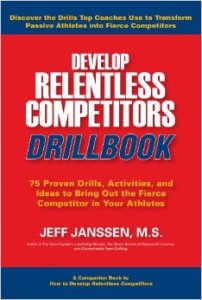Think back to your daughter’s first coloring project. Most likely she was about three years old. Before she began, it was necessary to give her a few simple procedural tips:
• The crayons are for coloring, they are not to be broken or eaten.
• Draw on the paper, not the desk, or the wall.
• Draw pretty, have fun!
The rest is history. She began drawing and most parents couldn’t wait to post her scribbled masterpiece on the refrigerator.
As time passed, your daughter took on the challenge of coloring her favorite princess in the coloring book. She would select a purple, green, or teal crayon to color the princess’ hair and a red or green crayon for her jacket or dress. The fact that there has never been a princess with hair or a dress that color was irrelevant to her. She chose those colors because she liked them or thought they were pretty.
Most likely the coloring extended beyond the outline of the princess and might be described as coloring in zones. Despite the flaws, it was an improvement over the scribbled masterpiece that it replaced on the front of the fridge.
With more practice, most of the coloring for the princess’ hair and dress were within the outline and the colors she selected more closely resembled those seen in the real world. By the time she was ten, she had “mastered” the use of crayons for coloring a princess.
At no point in the process did your daughter have a coloring trainer, coloring psychologist, or coloring dietician to help her improve her skills. Over the past seven years she developed her skills by practicing and receiving simple guidance and encouragement from her peers, parents, and teachers. The process was gradual, it was fun, and it gave her a sense of accomplishment. As a result, drawing and art will be a passion that she will share with others.
The learning process demonstrated by your daughter to color princesses is the same process she and other young kids use when they learn to play a sport. This process is outlined below as it applies to a junior learning to play tennis.
• Equipment – She can build a strong foundation if she has equipment designed for juniors – shorter racquets, low compression balls, and a smaller court.
• Safety and etiquette tips – Racquets are to be used for hitting the ball, not her sister, the ground, or the net post. Temper tantrums are not appropriate.
• Guidelines – It is overwhelming to play tennis for the first time, for the first year, and for the first seven years. Technical guidelines should be broken down into manageable bites.
• Realistic expectations – It took her seven years to draw a beautiful princess. It will take her longer to be a great tennis player. She is more likely to watch Wimbledon than to play there.
• Encouragement – Parents should provide “specific” encouragement even when the outcome isn’t pretty. For example, Instead of saying, “Good Job” say “You moved well to your forehand.”
• Performance – Praise her effort. Her number one priority is to manage her performance. The outcome (the scoreboard) is not her top priority. When the dust settles after a match, ask her if she had fun and tried her hardest.
• Learning – Provide an environment where she can learn from her mistakes. She will likely learn more from her errors than she will learn from you trying to keep her from making mistakes. For example, players may not always call out the score until they have experienced the tough lesson of losing a match because they lost track of who was winning.
• Comfort zone – As she improves, present greater challenges. Help her learn to function out of her comfort zone. For example, once she has become proficient at hitting forehands in the court, have her hit forehands cross court. Initially, that is a threatening task.
• Keep it fun! – Play during a cool part of the day and include her friends. Continue to present challenges as a way of giving her a chance to improve and feel good about getting better. That is fun!
• Celebrate – As she masters new challenges, celebrate! Just as you put her art masterpieces on the fridge, make room to display ribbons and medals.
• Patience – It takes time. It took awhile for her to choose the right color of crayon for the princess’ hair, it will take awhile for her to hit a spin serve, crosscourt backhand and become a proficient tennis player.
The process of learning to play tennis is not much different than learning how to color your favorite princess.
Watch and learn! It’s amazing how much a coach can learn by watching his daughter color princesses.




 organizing. They have winning records because they recruit more players with A-level talent than other coaches and they do a better job motivating them and keeping them happy.
organizing. They have winning records because they recruit more players with A-level talent than other coaches and they do a better job motivating them and keeping them happy.